Introduction
The normally sweltering city of Culiacán, Sinaloa was in the middle of an unusual cold snap in February 2020 when I asked my interlocutors—mainly investigative journalists and human rights activists—about the effects of the falling price of opium gum in the state. Silence reigned for a few seconds before they answered –perhaps showing even greater patience than usual– “there are no effects”.
Now, they were well aware that the price had decreased, but insisted that this did not have the devastating consequences that have been documented in states like Guerrero and Nayarit1 because, they insisted, “Sinaloa is not Guerrero or Nayarit”. They also seemed to know that the opioid market in the United States has been transformed, telling me that synthetic drugs like fentanyl (produced from chemical ingredients with no gum as raw material) have largely replaced heroin.
In Culiacán, these changes were barely even “topics of interest”, much less the focus of discussions of an impending crisis. In a café downtown, one source explained: “the business here is money”. That simple statement revealed that what was necessary was a closer inquiry into the differences that exist in value production chains and illicit drug distribution inside Sinaloa.
The result is this paper, where I analyze how the owners of the inputs required to produce illicit drugs in Sinaloa have developed mechanisms to soften or buffer the impact of falling heroin prices. To document this, I focus on the value-adding role of Culiacán in processing opium gum into heroin and the profitability achieved through the activities of storing and transporting drugs. I further explore certain advantages that Sinaloa’s economy presents, in contrast to what occurs in Guerrero and Nayarit, and how these are linked to illicit markets.

First of all, the poppy economy in Sinaloa must be analyzed at its two poles: the Sierra2 and the city, for only in this way can we shed light on the differences in levels of precariousness and incomes that exist between producers and intermediaries, and on the unprocured advantages that the formal economy offers illicit activities, advantages that are absent in other poppy-producing regions of Mexico.
The evidence presented was gathered in Culiacán and Aguaruto, Sinaloa, over several weeks in 2020, when the author interviewed government officials, journalists, and members of civil society. That fieldwork included visits with journalists to the state’s Expo Agro that provided access to key actors in agroindustries in the northwestern region of Mexico. The interviews followed a semi-structured format and lasted, on average, 120 minutes, under strict agreements of confidentiality. None of the individuals interviewed received any form of remuneration for their participation.
Added value in Culiacán
Conversations on illicit drugs and narcotrafficking rarely include precise discussions of how drugs are manufactured and distributed. The more complete narratives available tend to emphasize the link victims of accidental overdoses in the U.S. and Mexican drug “cartels” as a supposed explanation of the illicit drug market.
The town of La Tuna in Badiraguato may enjoy worldwide fame as the hometown of Joaquín “El Chapo” Guzmán, but discussions of how poppy and heroin value chains actually operate have largely been push to the margins of tales of narcotrafficking. This is to say that, beyond the maps published by governments and diverse actors of civil society that claim to depict the presence of organized crime groups and their transportation routes, has anyone really explained how opium gum extracted in the Sierra of Sinaloa makes its way to consumers in neighborhoods in the U.S. in the form of heroin? The answer is… “No”.
Sinaloa’s industrial tissue not only nourishes the licit economy, but also enables the absorption of illicit profits, while permitting adaptations to potential transformations of illicit markets.
The lack of analyses of this kind can be explained by two dynamics. The first involves the evident difficulties inherent in doing research on illicit markets. Despite the very real challenges of pursuing this activity, the fact is that some long-term studies on trafficking and consumption markets in both Mexico –especially along the U.S. border3– and on streets in el norte4 do exist and provide a means to approach the concrete social and economic reality of the vague concept captured by the label “international drug-trafficking”.
The second revolves around an –incorrect– assumption that continues to gain strength and is understood mechanically in the Mexican context; namely, that narcotrafficking is, by necessity, a violent activity, though this is usually argued without presenting any direct evidence. This second dynamic has led to an exaggerated emphasis on the so-called “narco-spectacle” that currently frames explanations in the form of stories in which traffickers (narcos) confront the State5.
What these accounts underscore is the supposed opulence of the narcos, their jewelry, vehicles, women, imported machine guns (cuernos de chivo), and the macho myths that envelop them. What they do not reveal are the less “cinematographic” aspects of illicit economies; that is, business, capital, and local and regional structural features that allow them to function. The images of poppies taken in the Sierra for publication in the national and international media nourish the idea of a remote, clandestine activity, one immersed in a savage, isolated world. But this is not totally how it is.
Here is where the city of Culiacán acquires importance. Although the heroin value chain begins in the Sierra, Culiacán has a fundamental role in transforming the gum produced there into powder. According to the Base de Datos de Acciones Antidrogas (Database of Antidrug Actions) developed by the group México Unido Contra la Delincuencia (Mexico United against Delinquency), from 2000 to 2019 the Department of National Defense (SEDENA) and the –now dissolved– Federal Police secured 2,073 laboratories in the country that produced illicit drugs. Of these, 544 were in Sinaloa, 26% of the national total.
Moreover, of the 38 laboratories classified as heroin and morphine producers, 18 were operating in Sinaloa and 8 in the city of Culiacán alone. Data from the Fiscalía General de la República (General Prosecutor’s Office, FGR) for the years 2000-2020, gathered and integrated into this same database, indicates that 612 laboratories in Sinaloa where synthetic drugs were elaborated were destroyed. Although the FGR does not break these data down at the municipal level, various municipalities in Sinaloa occupy high rungs in terms of the destruction of laboratories that produce synthetic drugs, accompanied by a few in the states of Jalisco and Michoacán.
It is important to emphasize here that even though the data from SEDENA, the Federal Police, and the FGR do not provide accounts of drug production but only of anti-drug actions, they are useful for comprehending the emphasis that has been placed on securing and destroying labs in Sinaloa. Furthermore, they provide indications of the scale of production that occurs in the state and, specifically, the capital. Thus, they are sufficient to allow us to think about the value chains that exist in the poppy economy and articulations between rural and urban spaces.
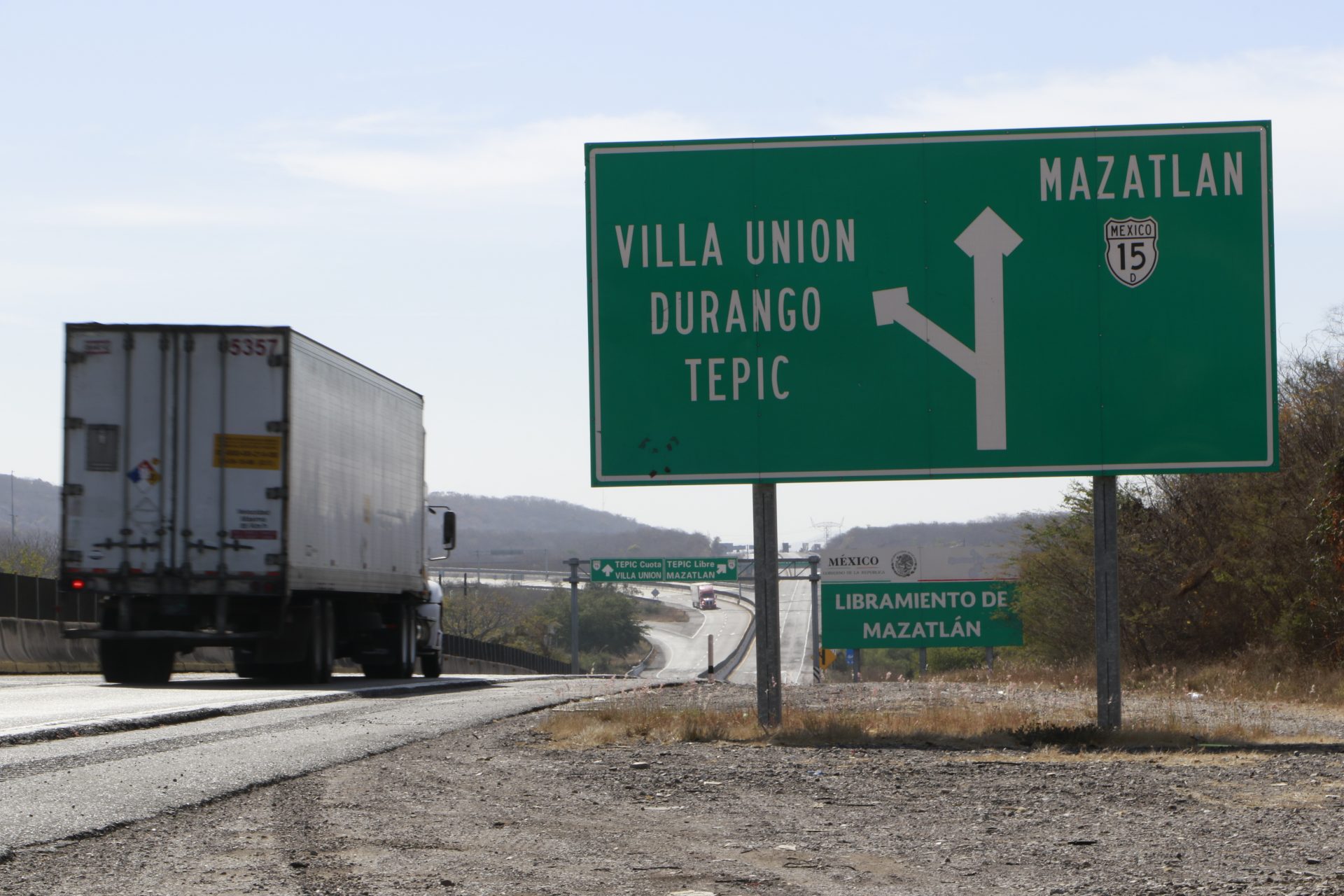
Similar to the situation in Guerrero, peasants in Sinaloa sell opium gum to intermediaries, the latter called “coyotes”. As Vizcarra points out in his article in this series, growers in Sinaloa and Durango do not operate as cooperatives. Far from a popular, romanticized vision of poppy-producing “communities”, the opium gum economy here is highly capitalistic and individualistic, each peasant devoted to maximizing his own profit.
In this world, the gum buyers set the price and are responsible for transporting it down from the mountains to production centers. This allows them to lower the purchase price in response to fluctuations in international markets. Just as occurs in markets for legal goods, it is likely that reductions in the street price of heroin in the U.S. are transferred to growers in the form of lower payments for each kilo of gum they sell6.
It is important to stress at this point that buyers have never paid a price that transfers wealth in the opposite direction; that is, from market to growers. In other words, the economic bonanza that accompanies heroin production during times of high demand is never transferred completely to growers. A journalist who has investigated illicit economies for over two decades explained this quite simply: “They’re fucked, always have been”. No possibility of becoming a millionaire has ever existed in the Sierra. At best, producers hope to escape for a time from a subsistence economy, but the foreseeable horizon lasts only a few months.
According to interviews with people in Culiacán, once packed, the gum is transported, among other ways, in small airplanes that service the sierra as aero taxis. These planes carry passengers and packages through the Sierras of Chihuahua, Durango, and Sinaloa, providing a service utilized mainly by people from urban centers who wish to send packages to relatives, or visit their families in the mountains. This –legal– service thrives because access along roadways is so difficult that a trip which may take 6 hours in a four-wheel drive pick-up is over in less than an hour by plane. On average, a round trip from Culiacán, Sinaloa, to Canelas, Durango, for example, costs $3,000 pesos (~$150 USD), so these aero taxis cannot be considered a form of “public transport”. Rather, the service is available to high-earners in urban areas who have the wherewithal to send packages or buy tickets to hard-to-reach areas.
It is important to stress that buyers have never paid a price that transfers wealth in the opposite direction; that is, from market to growers. In other words, the economic bonanza that accompanies heroin production during times of high demand is never transferred completely to growers.
But these aero taxis, obviously, can also be utilized to transport opium gum. Pilots must, of course, file official flight plans, but while in the Sierra they can easily pick up illicit merchandise and take it back to Culiacán. After all, they can simply claim that inclement weather or some other incident justified changes or delays in the registered flight plans.
To be clear, these planes do not operate illegally, but part of their official commercial activity may include extralegal services. The key point illustrated here is that the illegal economy cannot exist without the legal one. Although pop culture constructs a whole narco imaginary, the production and distribution of illicit drugs actually takes place through trivial activities that hardly deserve to be portrayed in narcocorridos. What’s more, the greater the legitimacy and official reputation of an aero taxi company, the lower the risk that its planes will be inspected or detained, so transport costs are set simultaneously by criteria both legal and illegal. The reliability of this service, ensured by the company’s operating capacity and ability to bribe authorities, raise the cost of transporting gum and, therefore, the intrinsic value of this product. Obviously, the cost of this means of transport lies beyond the reach of peasant producers.
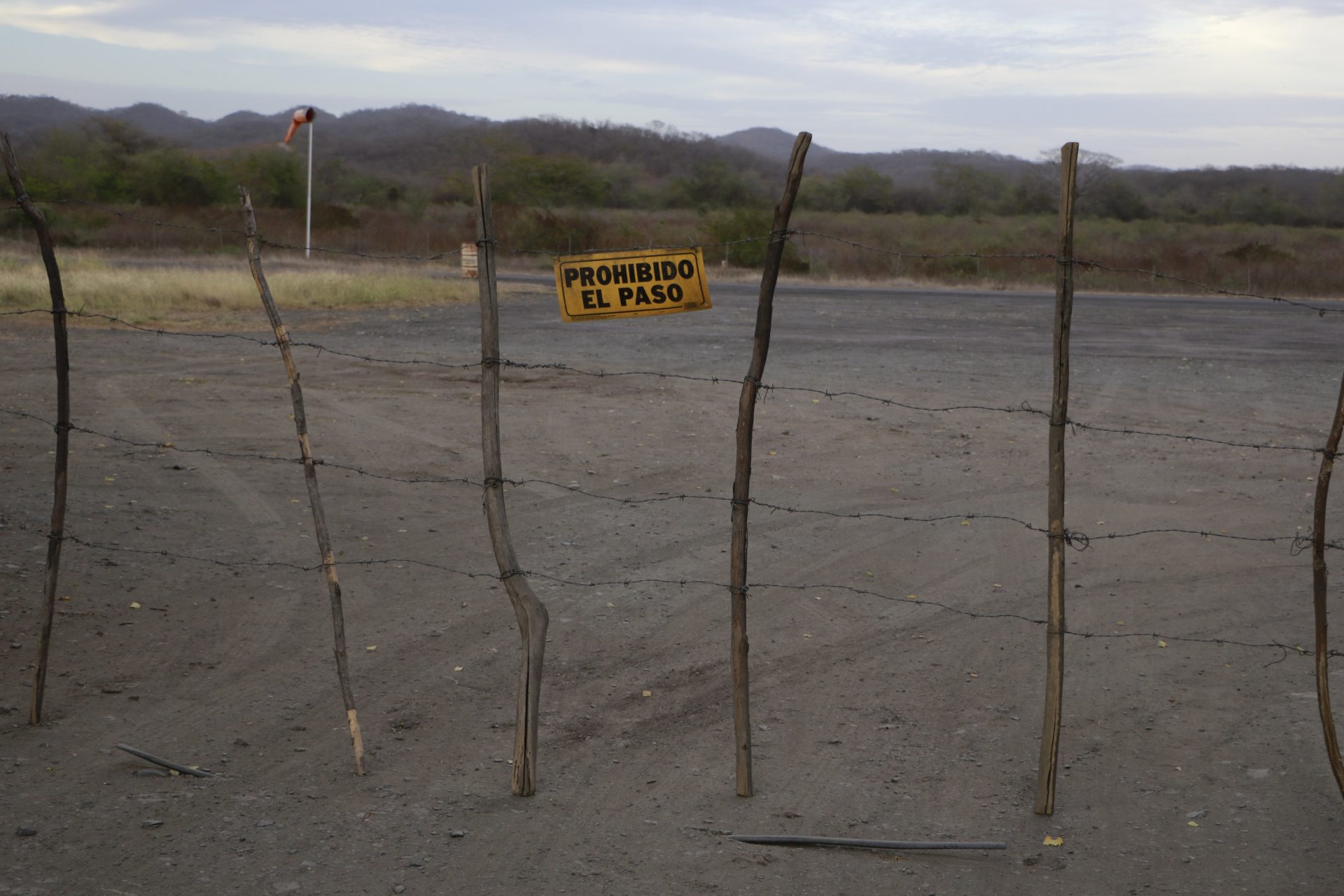
Therefore, just as the North Americans who consume tomatoes produced in Sinaloa pay the added value for packaging, transport, and distribution, heroin consumers pay for the services that connect streets in el norte with Culiacán and the Sierra of Sinaloa. Though it may seem obvious, it is important to emphasize that the prices at which drugs are sold to wholesalers on the U.S.-Mexico border are not set capriciously but, rather, result from this value chain with its inherent services, costs, and risks, while also reflecting the purity of the final product. The peasant producers quickly vanish from view, however, while the intermediaries pocket the bulk of the profits.
Storage, production, and distribution of heroin
After the gum is transported from the Sierra to Culiacán, the people who process and store heroin also extract value and profits through their services. These actors are distinct from the ones who participate in procuring and transporting the raw gum. Although they may all belong to a certain network or “group”, there is always differentiation among their respective functions. According to interviews with journalists in Sinaloa who investigate illegal economies in the state, one factor that helps explain why the changes in heroin prices have devastated growers, but not intermediaries, is linked to the diversity of the latter’s activities and products, which increases their capacity to adapt.
Anything that facilitates legal commerce will do the same for illegal trade.
In Culiacán, these actors not only collect and distribute heroin and marijuana (products long-associated with this state) but also deal in synthetic drugs produced there, and even imported cocaine. Through our interviews we learned that an important factor in understanding the profits reaped by intermediaries in urban centers in Sinaloa was the culmination of the Mazatlán-Durango highway that connected Sinaloa to the Texas border via the city of Matamoros, Tamaulipas. This event, lauded as the “greatest [public works project] in the history of highways in Mexico”7joined the Pacific northwest with the Gulf of Mexico and opened an alternative route for businessmen devoted to activities –legal and illegal– directed towards markets in the U.S.
Map 1. Mazatlán-Matamoros corridor8
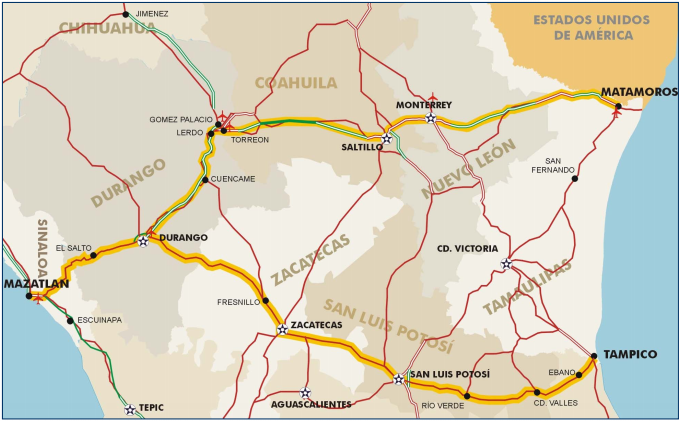
Running between the Sierra Madre Occidental and the drug-producing zone known as the “Golden Triangle” (triángulo dorado), construction of the Mazatlán-Durango highway began in 2001, but the project was not inaugurated until October 2013. This 230-kilometer long highway is not only a feat of engineering with 61 tunnels and the Baluarte Bridge, one of the highest cable-stayed bridges in the world, it also reduces travel time from six or eight hours to just two hours and a half. Just as important, it is a safer route for tourists and commercial users who, before 2013, had to take the –appropriately-named– roadway called the Devil’s Spine (Espinazo del Diablo). Specifically, the Mazatlán-Matamoros highway corridor communicates the cities of Mazatlán, Durango, Torreón, Gómez Palacios, Saltillo, Monterrey, Reynosa, and Matamoros (1,048 kilometers in total), thus integrating Sinaloa into northeast Mexico, including the U.S. border.
One factor that helps explain why the changes in heroin prices have devastated growers, but not intermediaries, is linked to the diversity of the latter’s activities and products, which increases their capacity to adapt.
Students of illicit markets in Sinaloa hold that the distribution of drugs cannot be understood from the state outwards to other areas of Mexico and the U.S. if we fail to consider the development of this infrastructure, for this highway connects Sinaloa to other markets, allowing distributors to obtain other sources of income. Obviously, no such affirmation can be applied to the peasant poppy growers, for they are trapped in an isolated economy based on monocropping. Interviewees further sustained that access to the highway helps explain the violence that plagues the port of Mazatlán9.
Information gathered in Sinaloa suggests that during the construction of this highway contractors periodically held negotiations with poppy growers who insisted that they be allowed to perform their work of cutting their flowers to extract gum. One source told us that producers arranged with the private companies in charge of constructing various stretches of the highway to ensure that when it came time to cut the flowers and extract the gum, they would retire their work crews or keep their employees in their camps so they would not interfere in the extraction process.
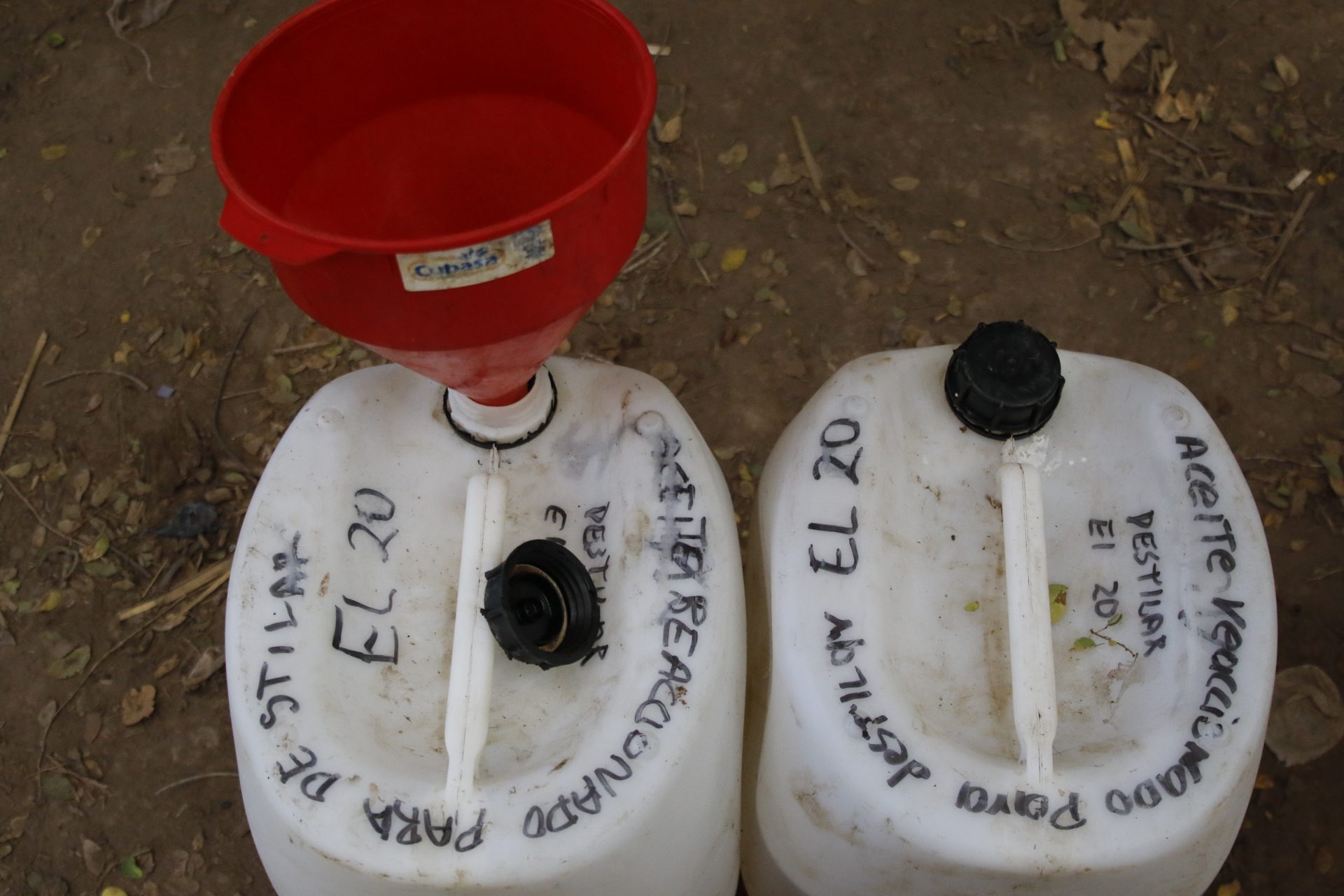
This example, once again, highlights intrinsic links between legal and illegal sectors. The development of the Mazatlán-Durango highway through the very heart of the Golden Triangle did nothing to make poppy cultivation disappear; indeed, quite the contrary, as producers adapted to the construction of sections of a roadway that, once completed, opened options for distributors involved not only in legitimate commerce with northeastern Mexico and the U.S., but also for those who participate in illicit markets.
Although infrastructure works are not cited in the main approaches adopted in efforts to comprehend drug-trafficking and violence in Mexico (except, perhaps, in the case of the port of Lázaro Cárdenas, Michoacán), they are essential for understanding the historical development of these phenomena, and of their contemporary evolution within dynamics of distribution. In other words, anything that facilitates legal commerce will do the same for illegal trade.
This is an essential point in light of the development of another highway: the one currently under construction between Badiraguato-Guadalupe and Calvo that will connect Culiacán, Sinaloa, with Parral in the state of Chihuahua. It is expected that this roadway –a project that began in the 1970s but was later abandoned– will reduce travel times between these two points from 27 to just 9 hours. This infrastructure project was conceived to accompany a program called “Planting Life” (Sembrando Vida) that was designed and implemented by the administration of President Andrés Manuel López Obrador. In March 2020, during a visit to supervise construction, the president announced that the Sierra would be reforested with fruit and timber trees through a program that grants monthly payments to planters of $5,000 pesos. On the day of that announcement, however, what captured the attention of the Mexican and international media –almost exclusively– was the fact that López Obrador greeted Joaquín El Chapo Guzmán’s mother, an attendee at the event. But the transcendent aspect of the project is the impact that this interstate highway will have on the heart of the Golden Triangle.
Economic complexity and competitiveness
As is abundantly clear, themodel of the production and distribution of illicit drugs in Sinaloa does not operate in some kind of economic or political vacuum. It is not true that intermediaries in Culiacán are better businessmen than those in the rest of the country. Of course, their networks may have more years of experience and be better connected, but beyond the longevity of their activities and the resulting transfer of knowledge, intermediaries in Culiacán operate in a context of intense economic competition and “complexity” linked directly to the history of commercial exchanges with the U.S. constructed since the late 19th century10.
The Mexican government’s Index of Economic Complexity is “a measure of the capacities that exist in an economy inferred on the basis of connections among localities and the activities developed in each one. A higher level of complexity is related (…) to a higher level of income and greater economic growth”11. In 2020, Sinaloa held 17th place on this Index out of the 32 states in the country. In comparison, the poppy-growing states of Nayarit and Guerrero occupied places 28 and 31, respectively.
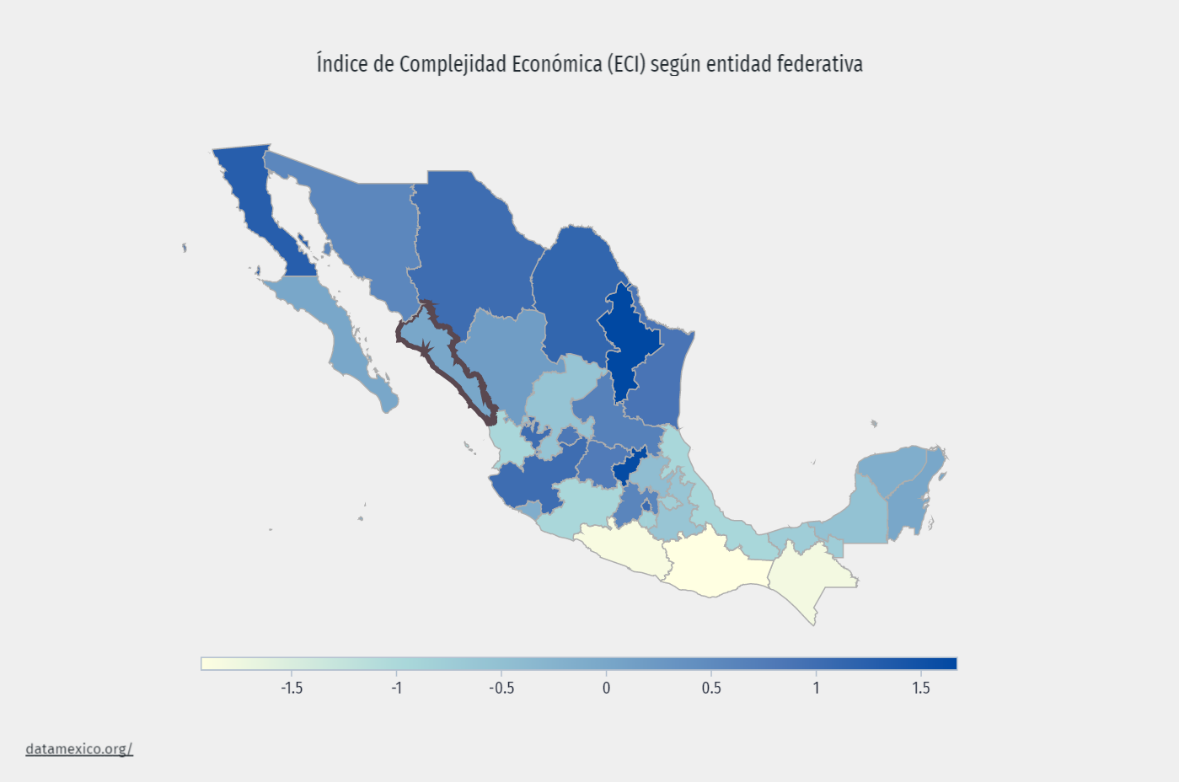
A second index, this one entitled Doing Business, elaborated by the World Bank, classifies global and sub-national economies in accordance with the complexity of their regulations and the protection of property rights. It places Sinaloa in fifth place among Mexico’s 32 states. In simple terms, this means that Sinaloa is one of the best places in Mexico for doing business. In comparison, Tepic (Nayarit) and Acapulco (Guerrero) occupy rungs 22 and 30, respectively12. Chilpancingo, the capital of the state of Guerrero does not appear in this ranking, much less Tlapa de Comonfort, the “capital” of the region called the Montaña, despite the fact that it plays a central role in the poppy economy in that state.
These indices reveal not only that huge amounts of capital accumulate in Sinaloa, but that the vast majority come from perfectly legal activities, for while this state covers only 3% of the national territory and houses only 2.5% of the country’s population, it accounts for one/third of all the food produced in Mexico13. This industrial tissue not only nourishes the licit economy, but also enables the absorption of illicit profits, while permitting adaptations to potential transformations of illicit markets.
If tomorrow we were to wake up in a Mexico where semi-synthetic drugs (like heroin derived from poppies) were legal, Sinaloa would be much better positioned than Guerrero or Nayarit to exploit the opportunity to a maximum.
In this regard, during the Expo Agro event in early 202014, the then director of the National Agricultural Council(Consejo Nacional Agropecuario) proposed the cultivation and processing of marihuana as a solution to the crisis affecting Mexico’s agroindustrial sector; stating that rural areas were already “prepared” for that industry15. The date and place of his declarations were no coincidence. Not only were they pronounced in the state where the entrenched foundational myth of drug-trafficking in Mexico was born, but in one where crops still classified as illegal could quickly be integrated into a world class agroindustry. This is to say that if tomorrow we were to wake up in a Mexico where semi-synthetic drugs (like heroin derived from poppies) were legal, Sinaloa would be much better positioned than Guerrero or Nayarit to exploit the opportunity to a maximum.
These structures are precisely the ones that allow drug intermediaries in Culiacán to absorb the shocks emitted by markets. In contrast, as is true for any capitalist activity, the unskilled labor involved, like peasant poppy growers there, have few, if any, possibilities to adapt.
According to estimates published in 202016, the price of heroin in the U.S. has decreased steadily since 2010, when it reached a maximum of nearly $1,100 USD per gram17 ($21,142 pesos). By 2016, the most recent year for which data are available, the price per gram was below $800 USD ($15,376 pesos). Although the price of methamphetamines has also fallen from its peak in 2008, its fluctuation since 2011 has been much less severe, oscillating between $200 and $300 USD per gram ($5,770-$3,850 pesos). Moreover, although the number of chronic cocaine users in the U.S. (those who consumed on four days or more in the past month) fell from 3.8 million in 2006 to 2.3 million in 2016, the price has shown a slight recovery and, since 2008, has remained above $200 USD per gram ($3,850 pesos).
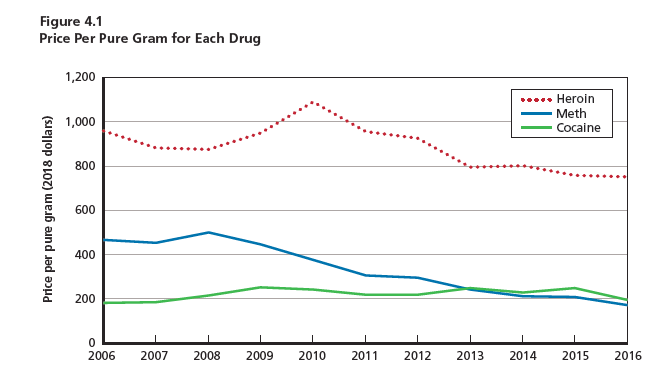
It is important to clarify that the present analysis is not arguing in any way that retail per-gram selling prices in the U.S. reflect the payments that distributors in Sinaloa receive. It would be absurd to suppose that a kilo of heroin sells for $800,000 USD at the border. These disaggregated per-gram drug prices are mentioned only to illustrate that the business of producing, storing, and distributing various drugs provides intermediaries with multiple sources of income, so they do not depend exclusively on the demand for one product.
Conclusion
The poppy economy in Sinaloa must be understood from the perspective of both rural cultivation spaces and spaces of production, storage, and transport established in urban areas. The model of the production and distribution of drugs depicted herein does not operate on the margins of the formal economy but, rather, benefits directly from it.
Thanks to the great complexity of Sinaloa’s economy, in contrast to those of Guerrero and Nayarit, intermediaries here operate in a commercial setting that offers certain advantages. Especially important in this regard was the completion of the Mazatlán-Durango highway that connected the Pacific northwest with the U.S. via the border city of Matamoros. This infrastructure project, concluded in 2013, opened alternative routes for commercial exchanges with Mexico’s northern neighbor, including those involving illicit products. This generated sources of income for intermediaries that were not accessible to growers.
It is important to stress, as well, that the economic bonanza associated with heroin is not transferred to growers. In contrast, the intermediaries and owners of inputs obtain profits by adding value at each step of the process of transforming opium gum into heroin and then exporting it. Therefore, when the price of heroin falls, the intermediaries have mechanisms that allow them to mitigate the effects of these changes, mechanisms that simply do not exist for growers.
As a result, analyses of the poppy crisis must take into account the distinct actors who are active in this value chain and the conditions in which their participation takes place.
Notes
- LE COUR GRANDMAISON, MORRIS, SMITH, No More Opium for the Masses, Noria Research, 2019. ↩︎
- To learn more about the dynamics of the Sierra, see Marcos Vizcarra in this series. ↩︎
- Beletsky, L., Baker, P., Arredondo, J., Emuka, A., Goodman-Meza, D., Medina-Mora, M. E., . & Magis-Rodriguez, C. (2018). The global health and equity imperative for safe consumption facilities. The Lancet, 392(10147), 553-554.
Arredondo Sanchez Lira, J. (2017). Evaluating the Implementation of Drug Decriminalization in Tijuana Mexico: Police and Public Health (Doctoral dissertation, UC San Diego). ↩︎ - Mars, S. G., Bourgois, P., Karandinos, G., Montero, F., & Ciccarone, D. (2014). “Every ‘never’I ever said came true”: transitions from opioid pills to heroin injecting. International Journal of Drug Policy, 25(2), 257-266.
Bourgois, P., Hart, L. K., Montero, F., & Karandinos, G. (2019). The Political and Emotional Economy of Violence in US Inner City Narcotics Markets. Ritual, Emotion, Violence: Studies on the Micro-Sociology of Randall Collins, 46-78.
Bourgois, P. (2003). In search of respect: Selling crack in El Barrio (No. 10). Cambridge University Press. ↩︎ - See LE COUR GRANDMAISON, El narco-espectaculo puede terminar, https://revistaespejo.com/2020/10/17/el-narco-espectaculo-puede-terminar/ ↩︎
- Although there is anecdotal evidence suggesting that this dynamic exists, systematic research is required to shed light on the exchange of information between suppliers and demanders. ↩︎
- Source: http://www.sct.gob.mx/uploads/media/080722_Conferencia_de_prensa_-_Durango-Mazatlan.pdf ↩︎
- Source: http://www.sct.gob.mx/uploads/media/080722_Conferencia_de_prensa_-_Durango-Mazatlan.pdf ↩︎
- It is important to keep in mind that this datum is presented only to illustrate key points that interviewees mentioned, since no causal relation between highway access and the increase in homicides in the port has yet been demonstrated. ↩︎
- FARFAN-MENDEZ, Cecilia, PORTER, Jayson Maurice, “Setting the Table. The Licit Beginnings of Sinaloa’s Illicit Export Economy”, Noria Research, December 2020 – https://noria-research.com/the-licit-beginnings-of-sinaloas-illicit-export-economy/ ↩︎
- Data México, Sinaloa, Complejidad – https://datamexico.org/es/profile/geo/sinaloa-si#complejidad ↩︎
- https://www.doingbusiness.org/en/data/exploreeconomies/mexico/. ↩︎
- http://citsinaloa.gob.mx/en/agribusiness/ ↩︎
- Described as “the most important agricultural exposition in northeastern Mexico”. ↩︎
- https://www.reforma.com/aplicacioneslibre/preacceso/articulo/default.aspx?__rval=1&urlredirect=https://www.reforma.com/ven-en-mariguana-solucion-del-agro/ar1868657?referer=–7d616165662f3a3a6262623b727a7a7279703b767a783a– ↩︎
- Based on data gathered by authorities in the U.S. ↩︎
- Dollars and pesos at 2018 levels. ↩︎

